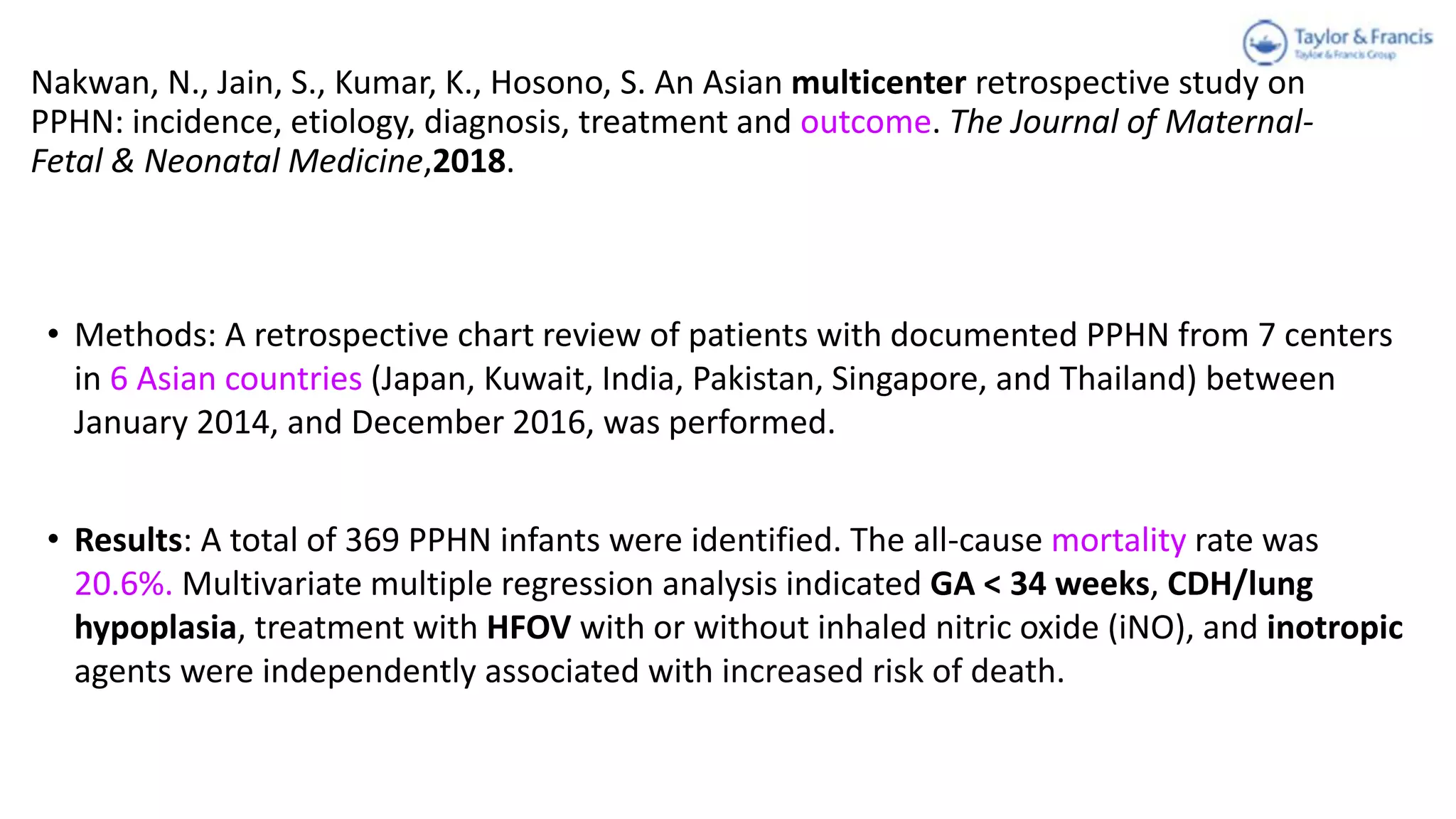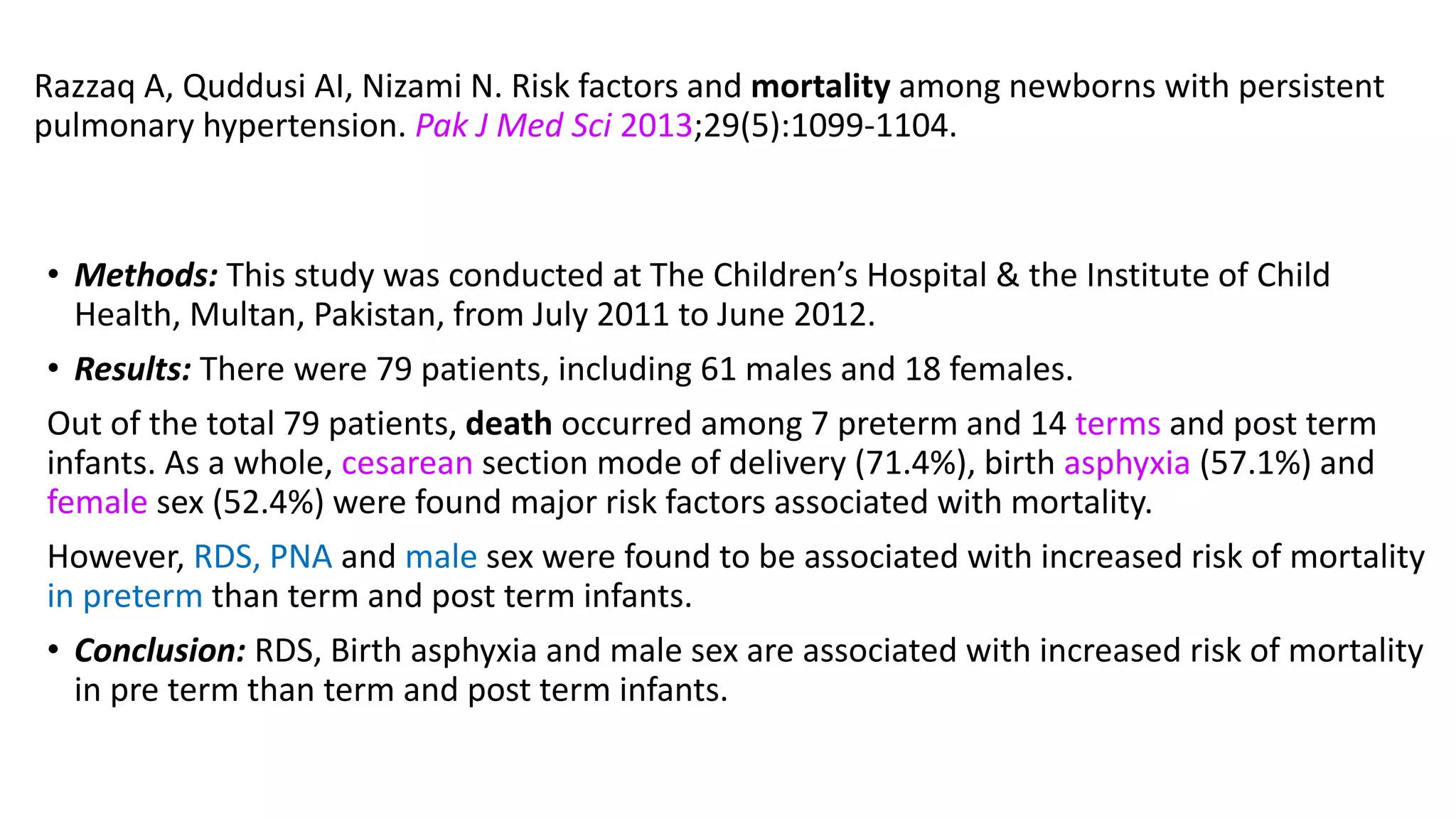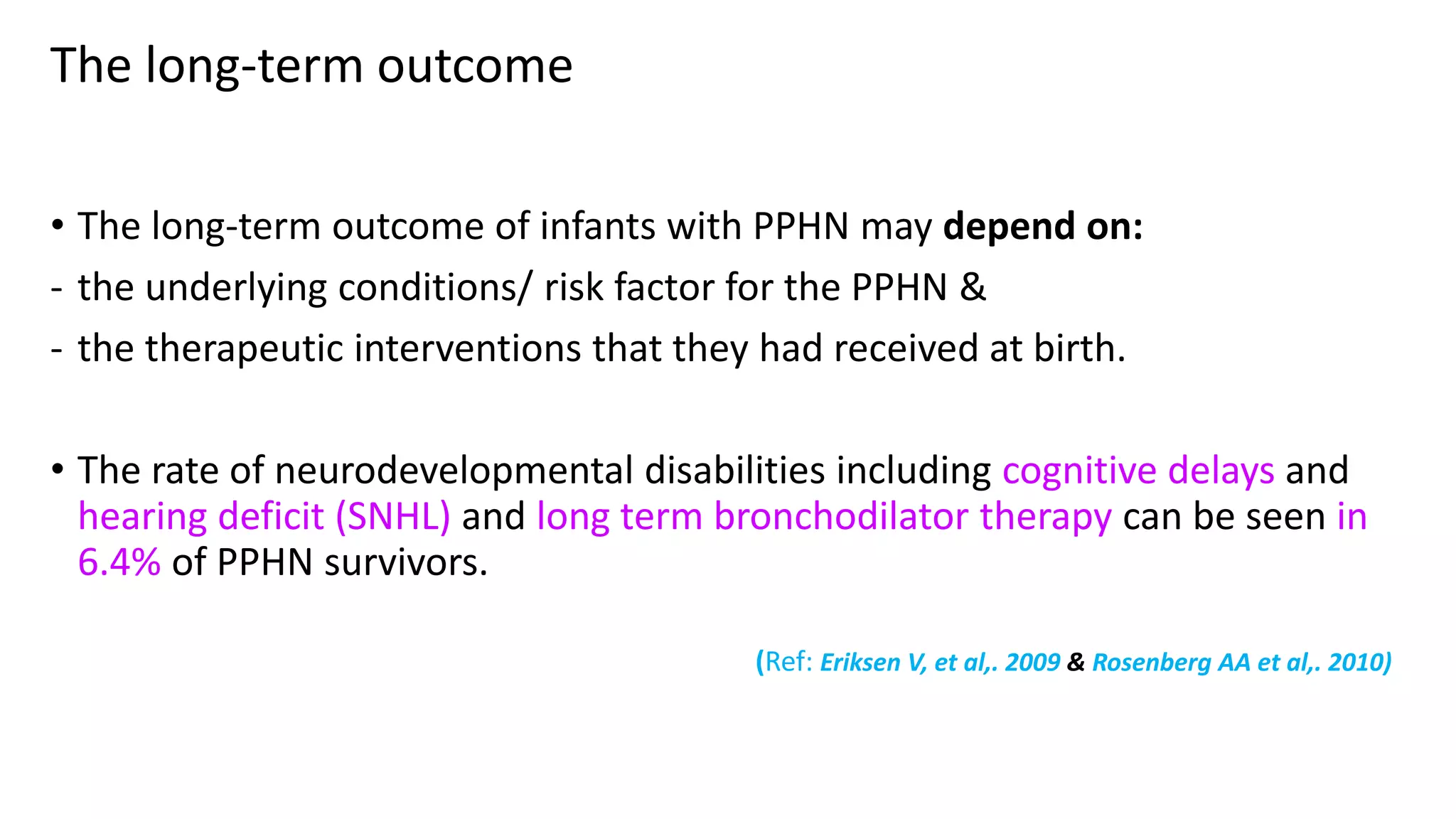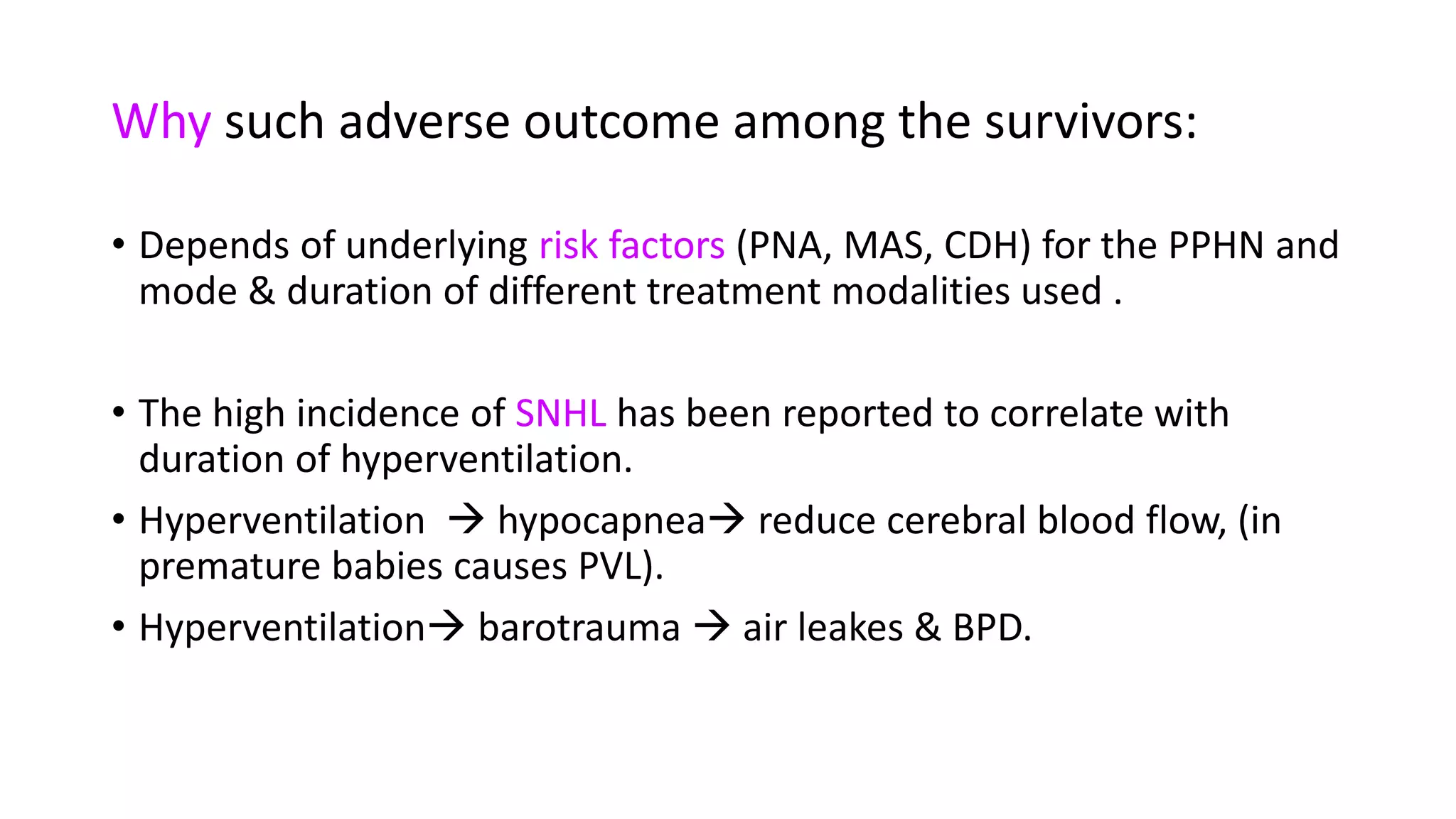A case of persistent pulmonary hypertension of the newborn (PPHN) is presented. The infant was born via emergency cesarean section at 37 weeks gestation to a mother with uncontrolled hypertension during pregnancy. At birth, the infant had meconium staining of the amniotic fluid and required respiratory support. On day 6, the infant began to develop desaturations down to 84% oxygen saturation while on routine care. The infant is diagnosed with PPHN based on clinical presentation and laboratory findings. PPHN requires aggressive respiratory and pharmacological management to reduce pulmonary vascular resistance and improve oxygenation.

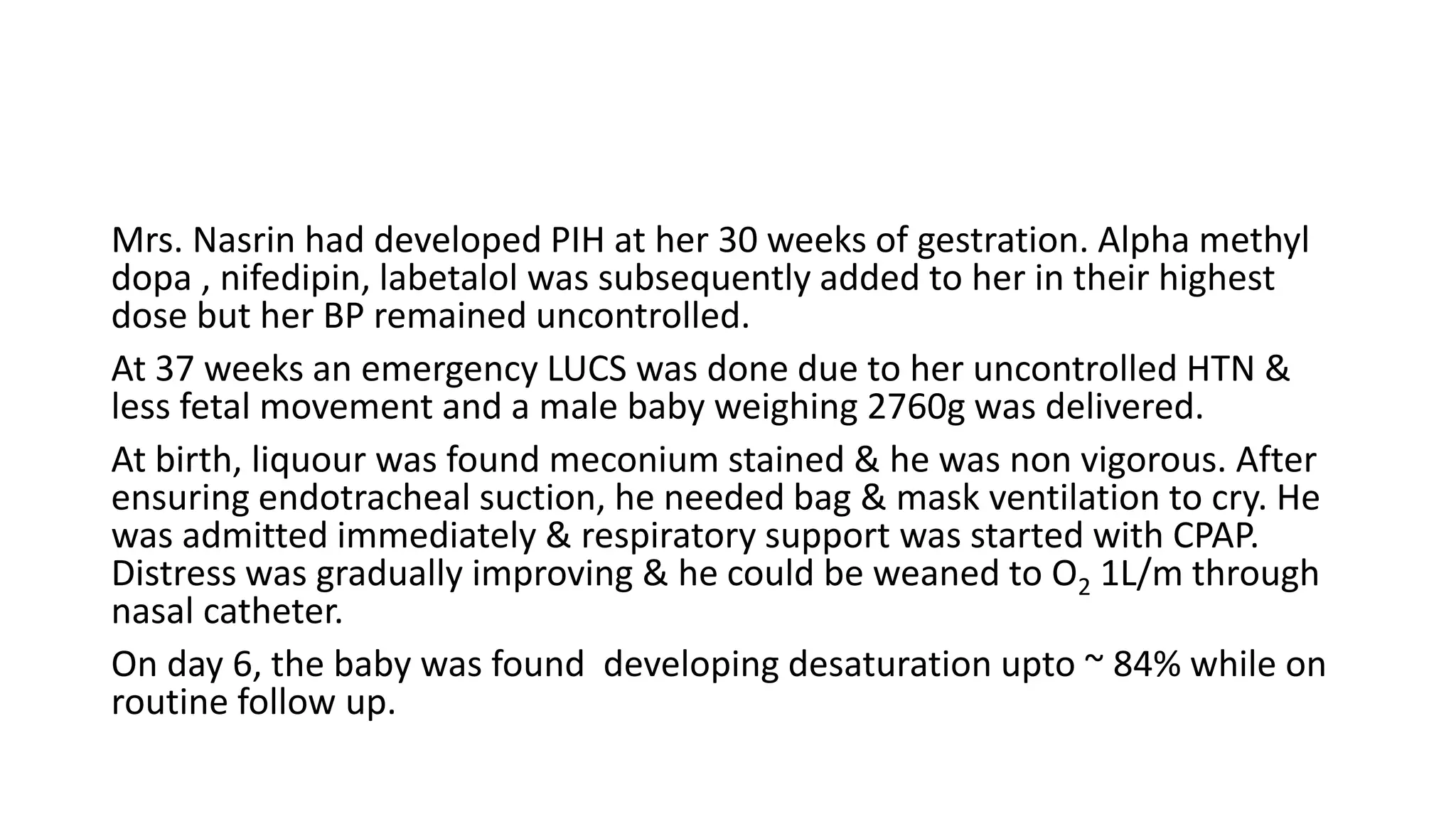


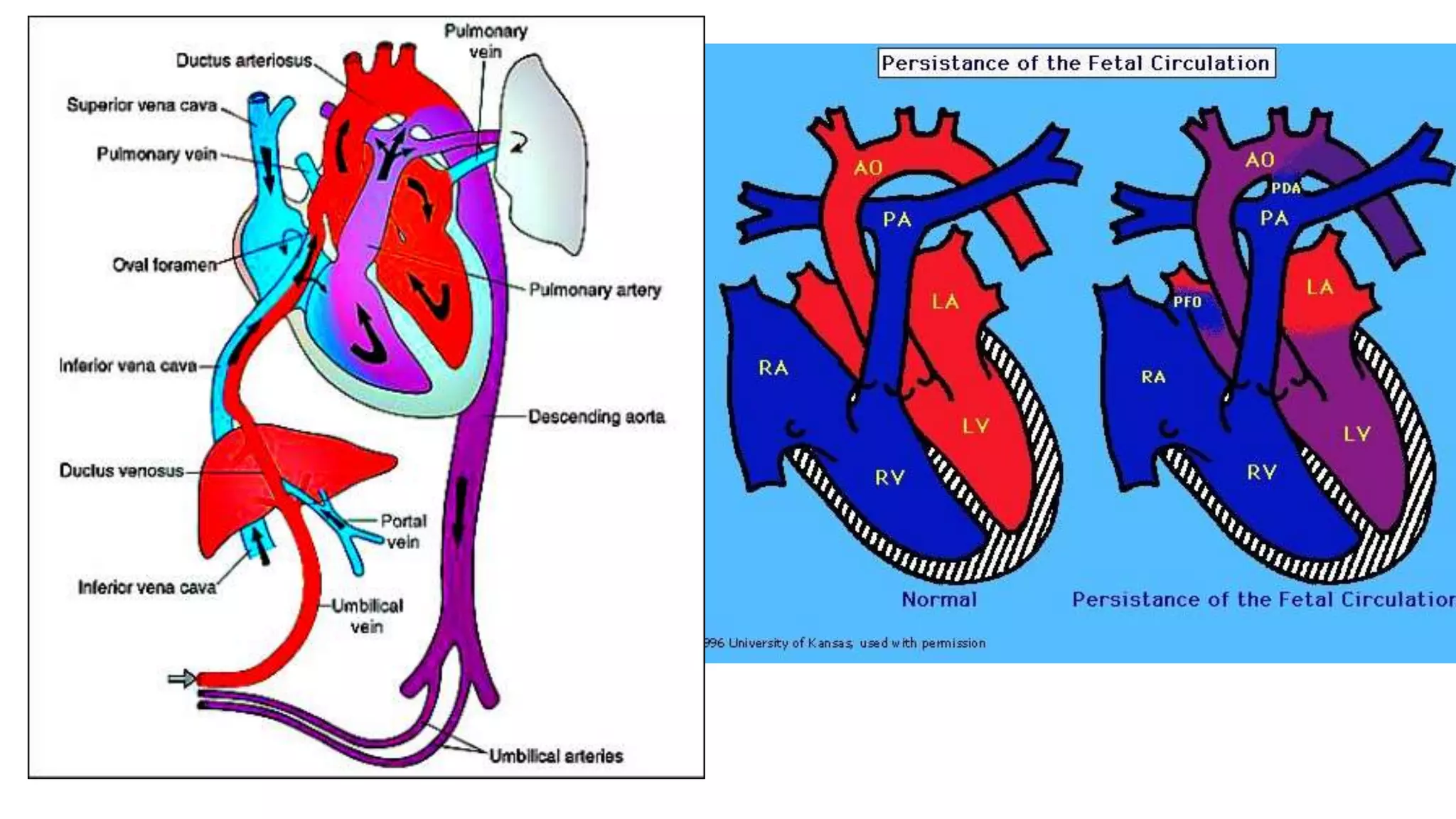
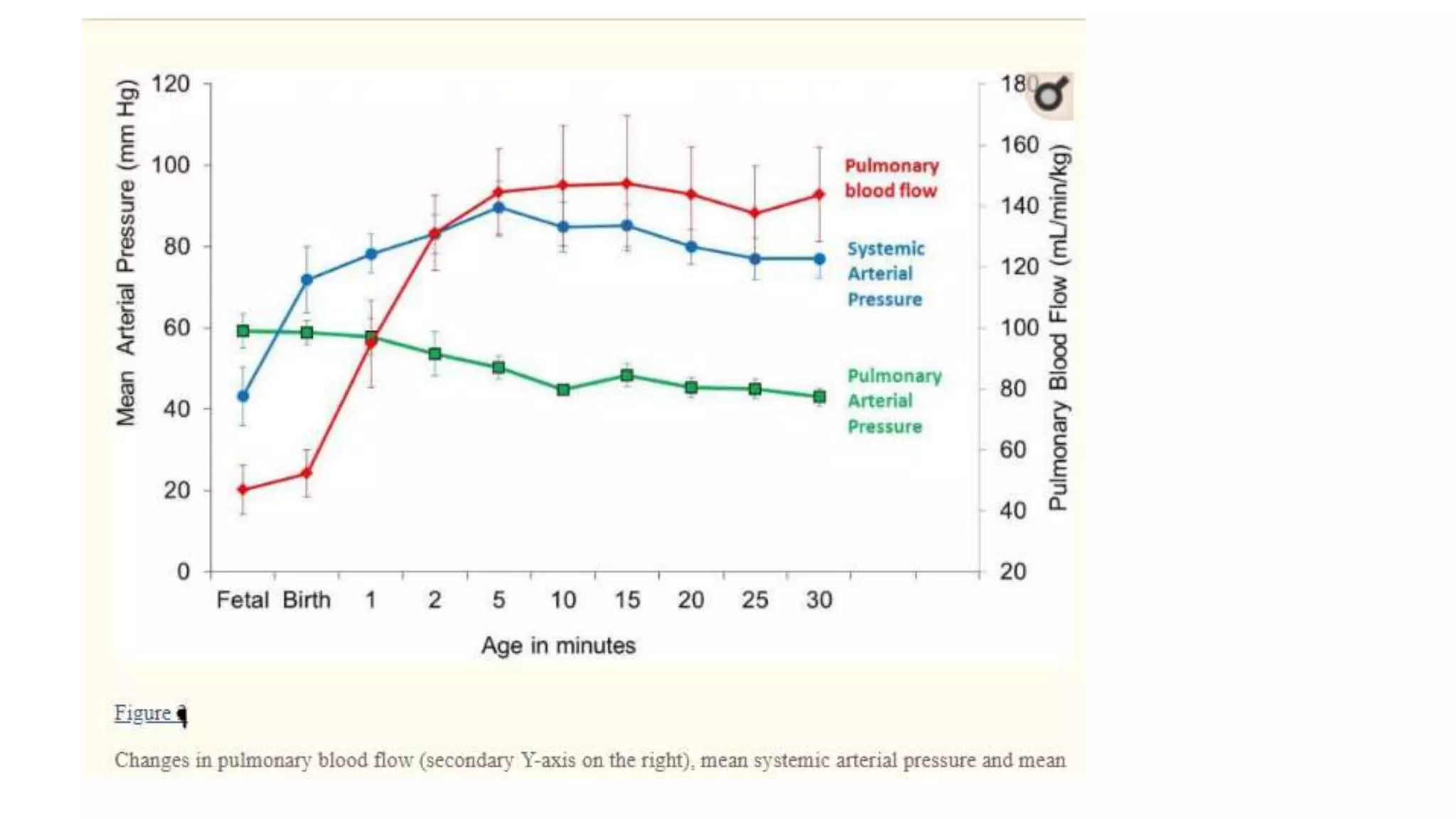


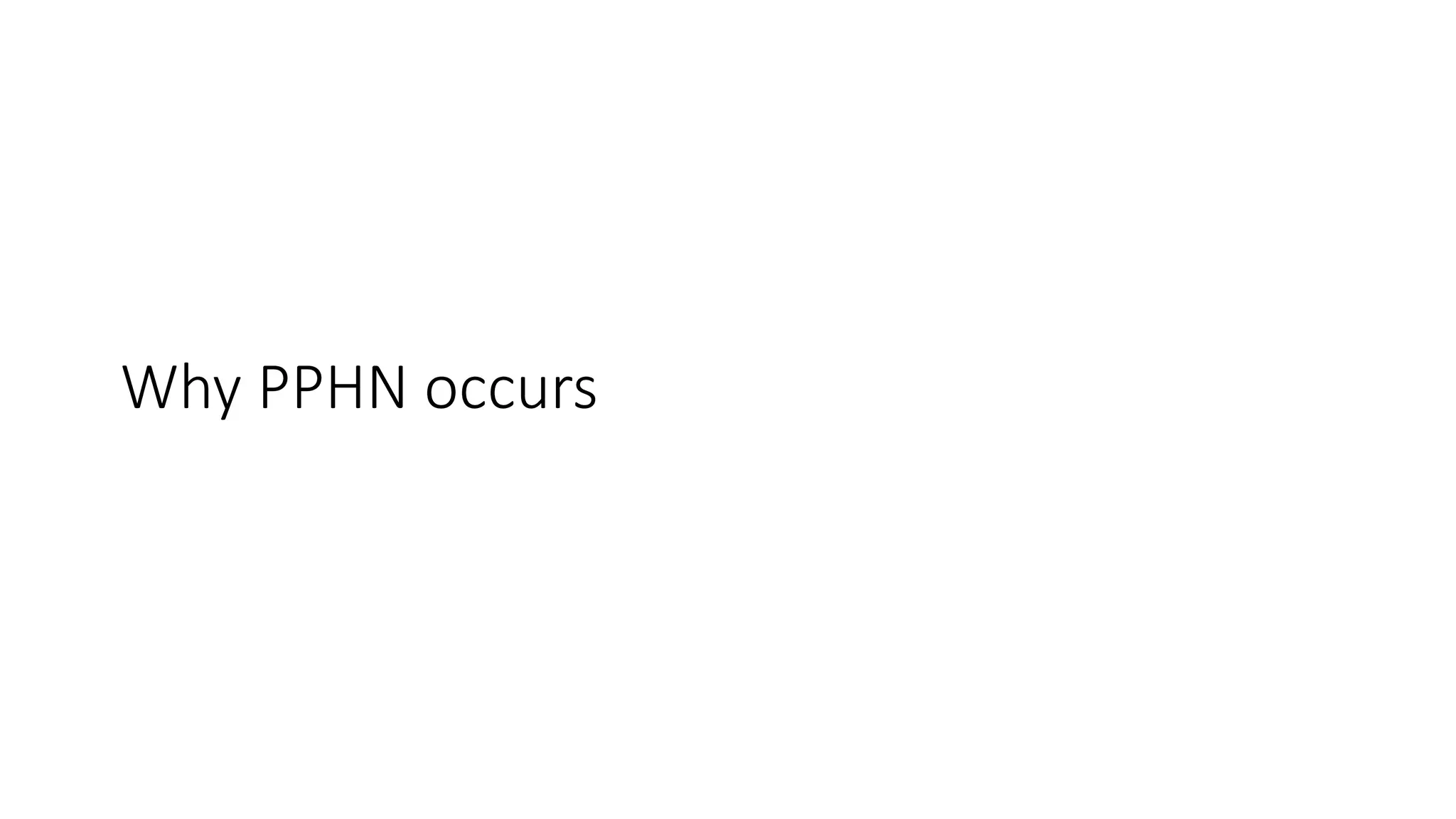
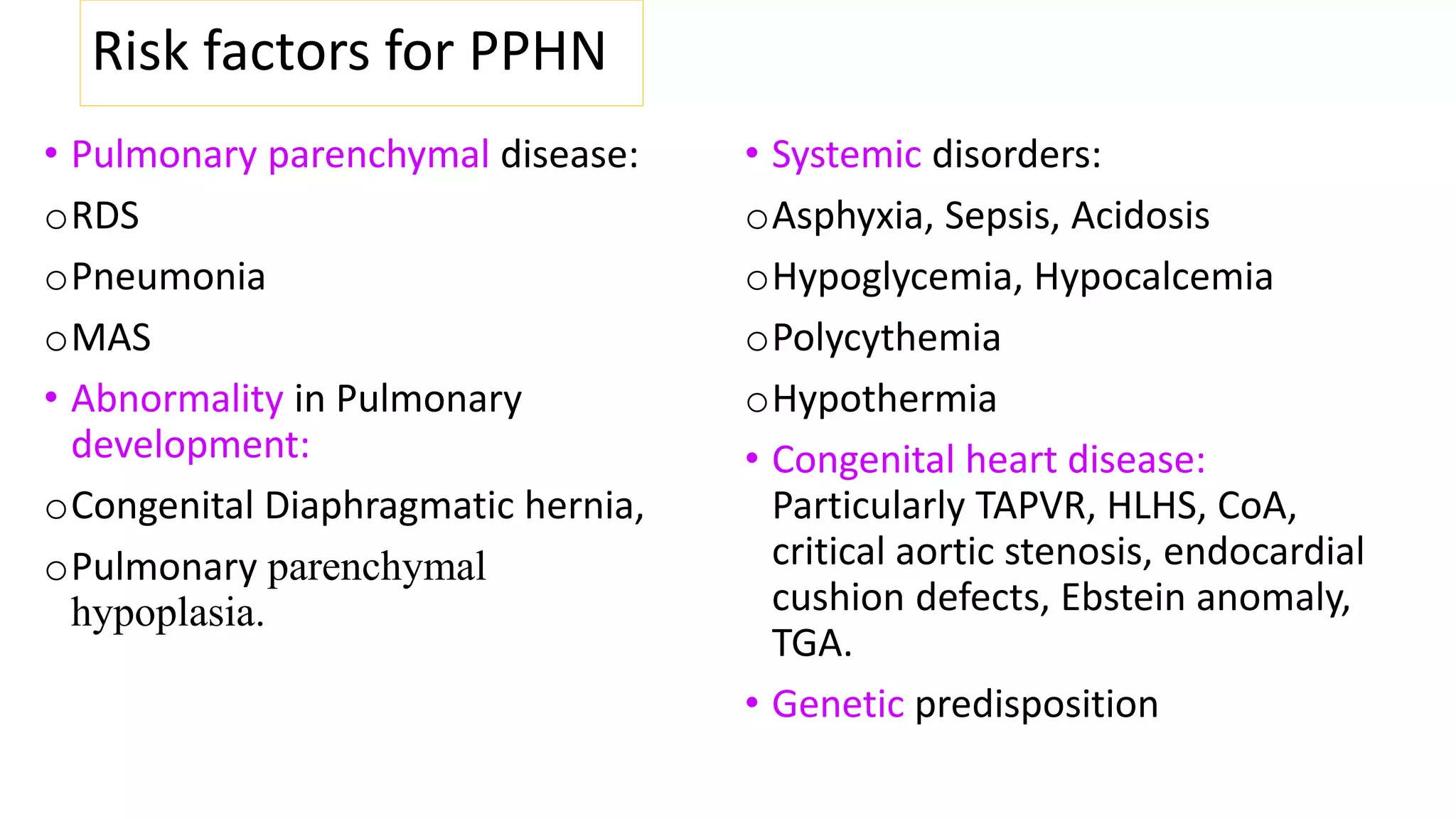
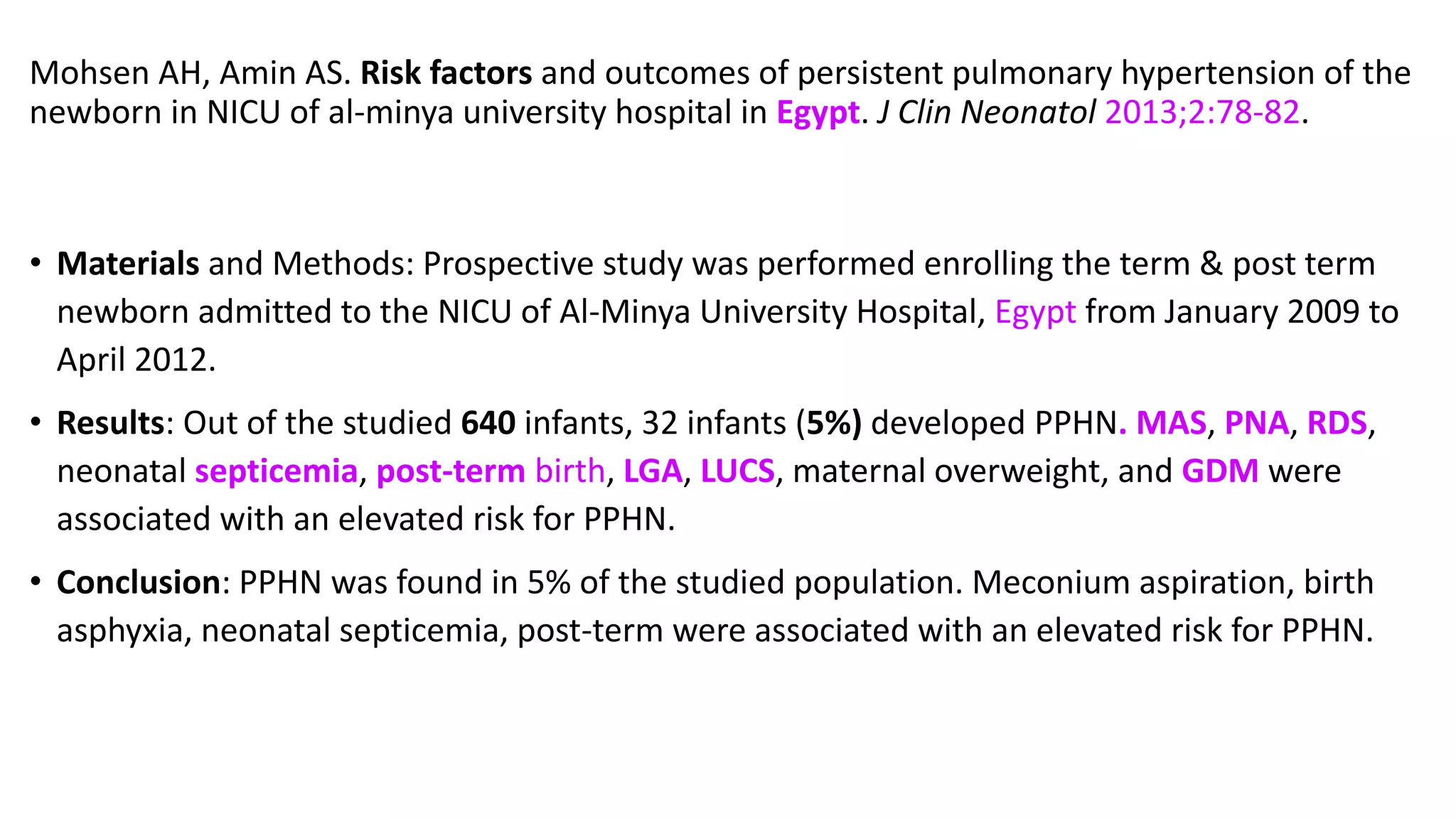





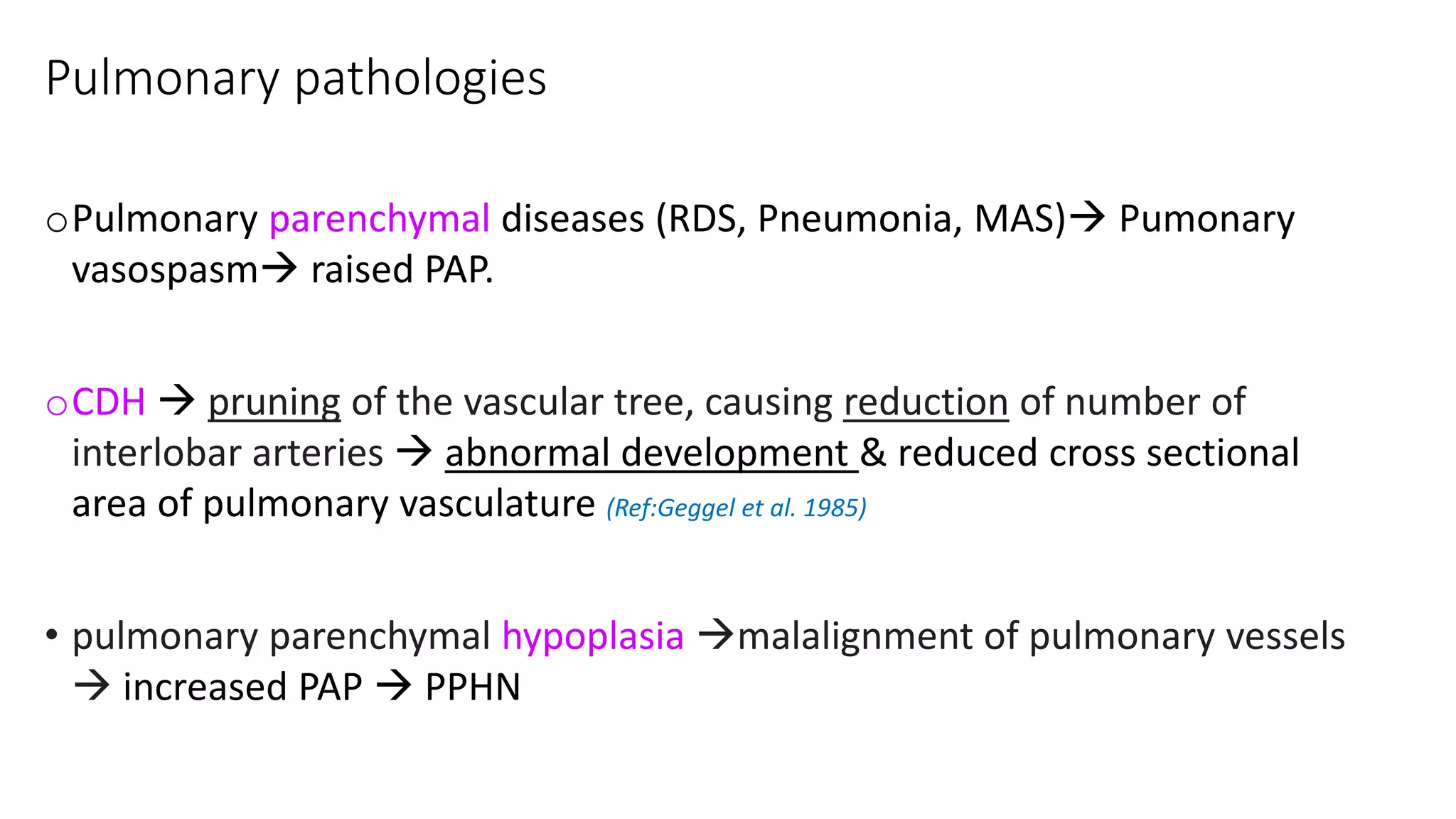


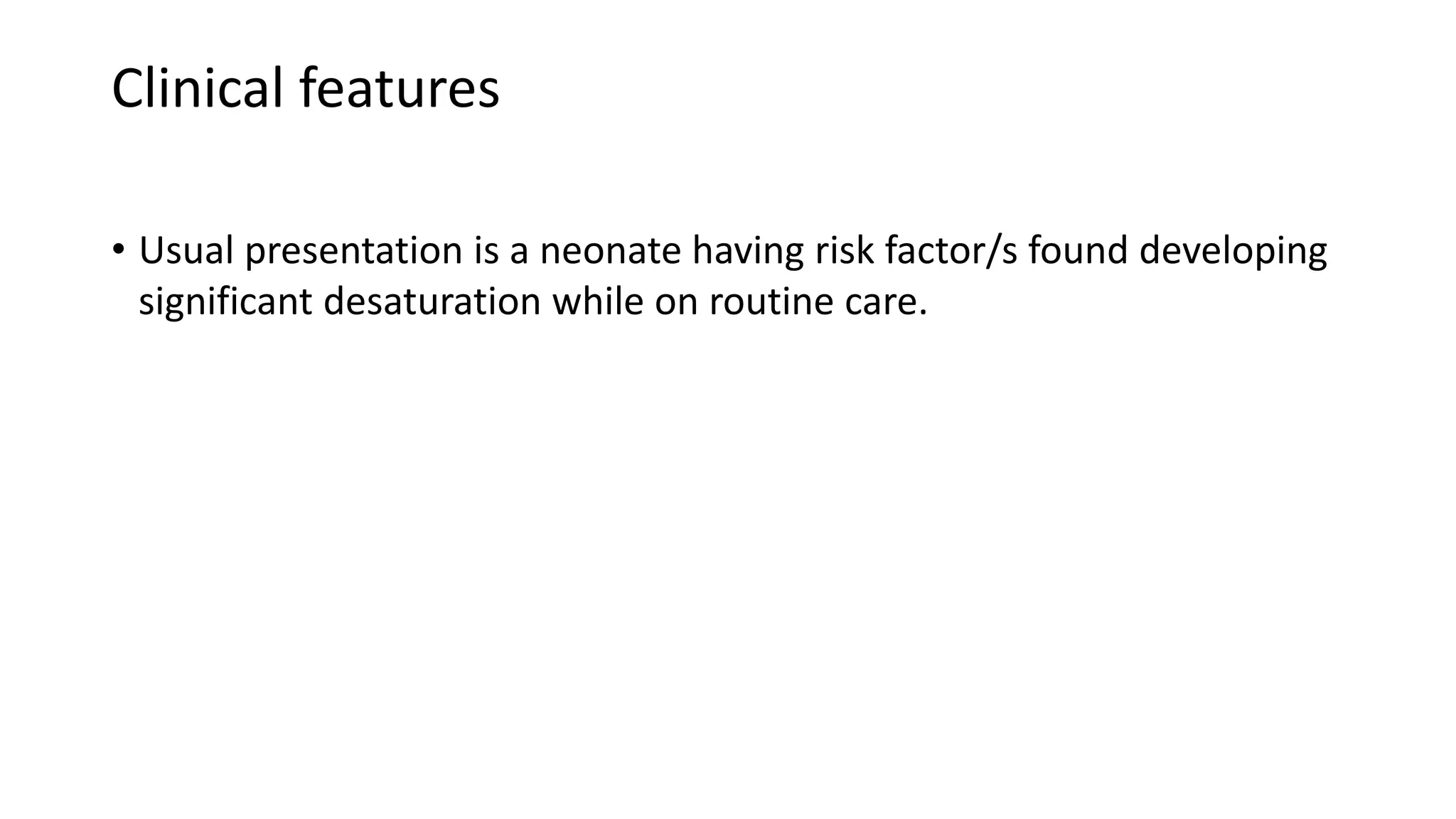


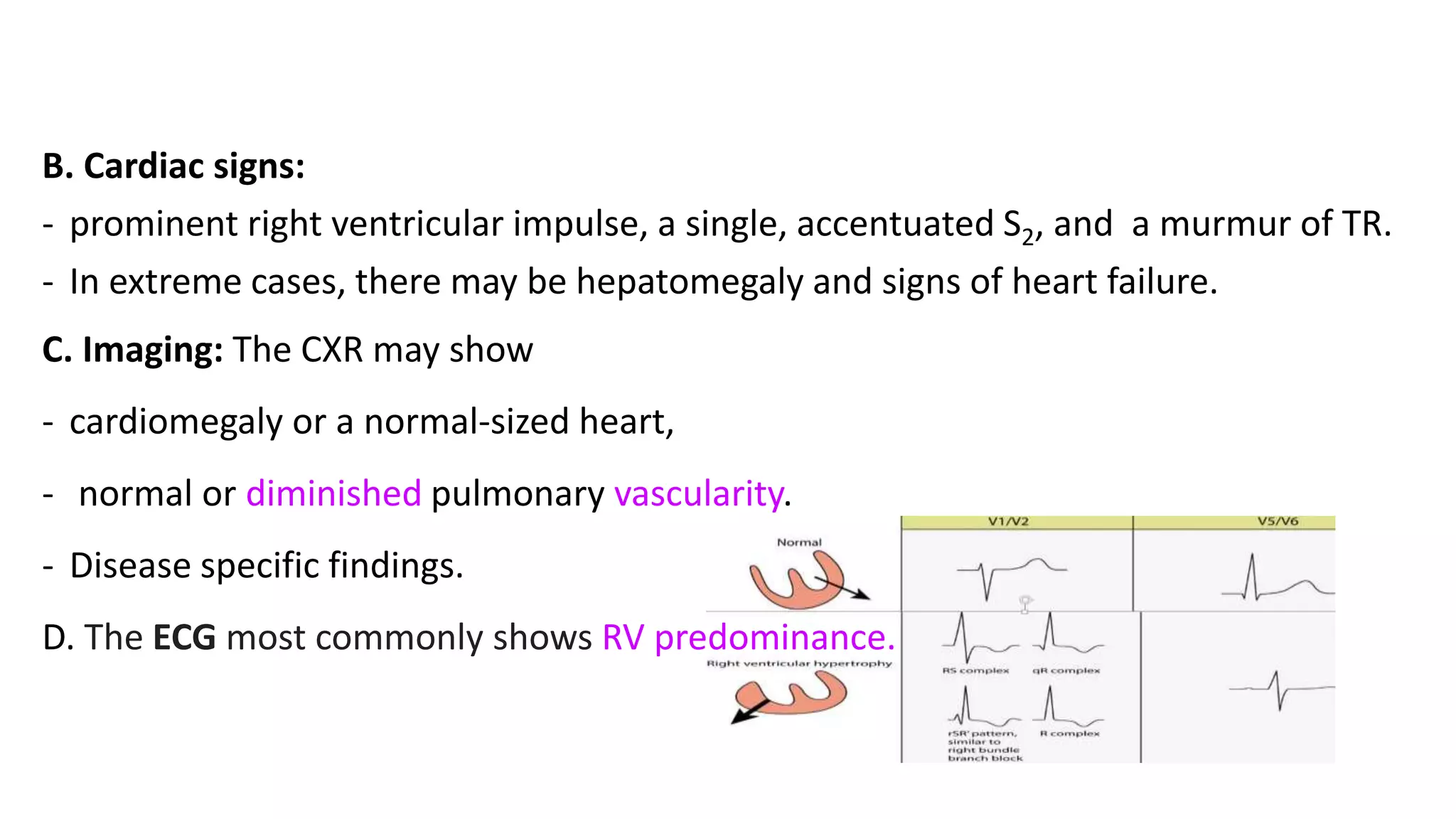

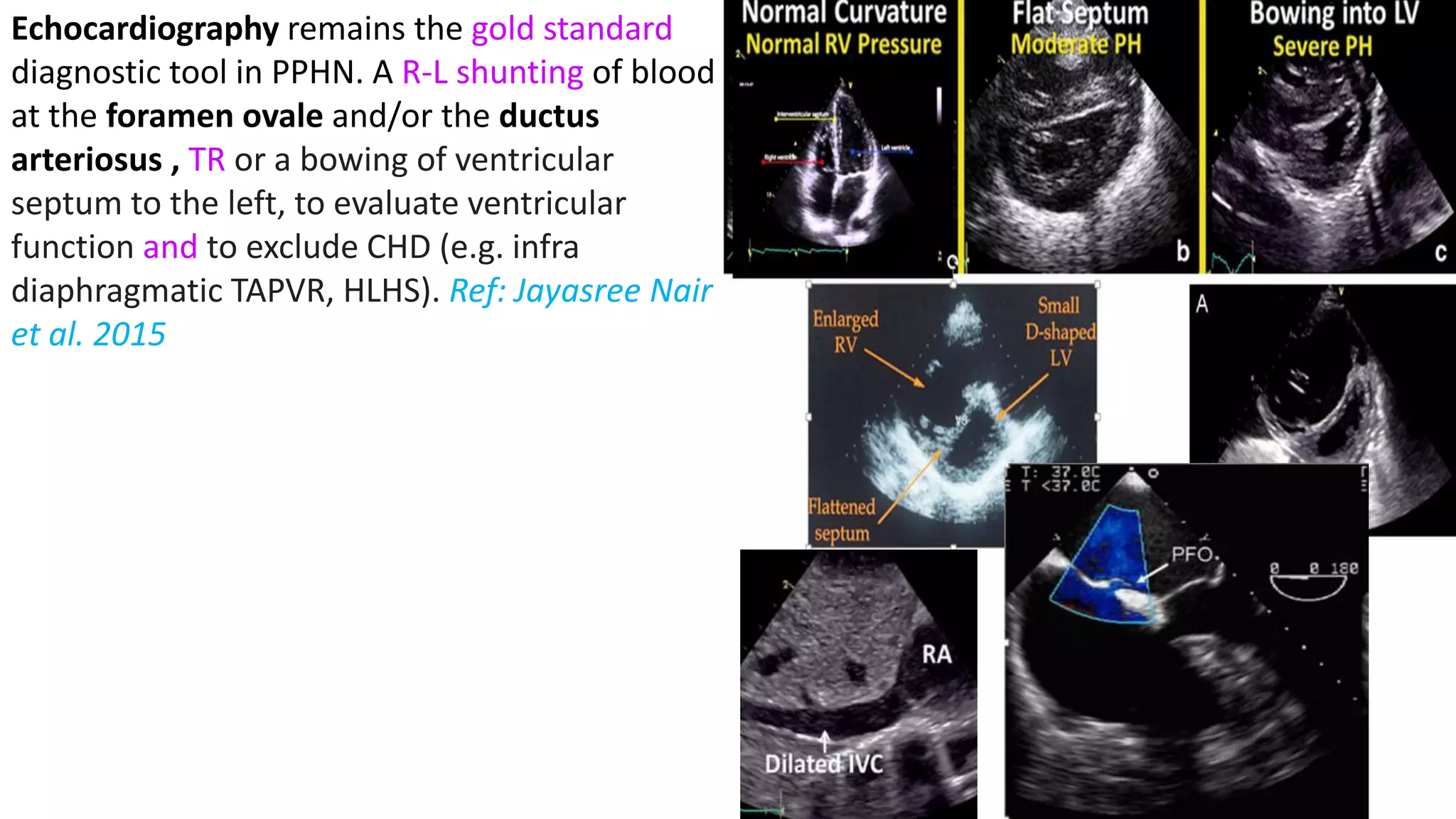



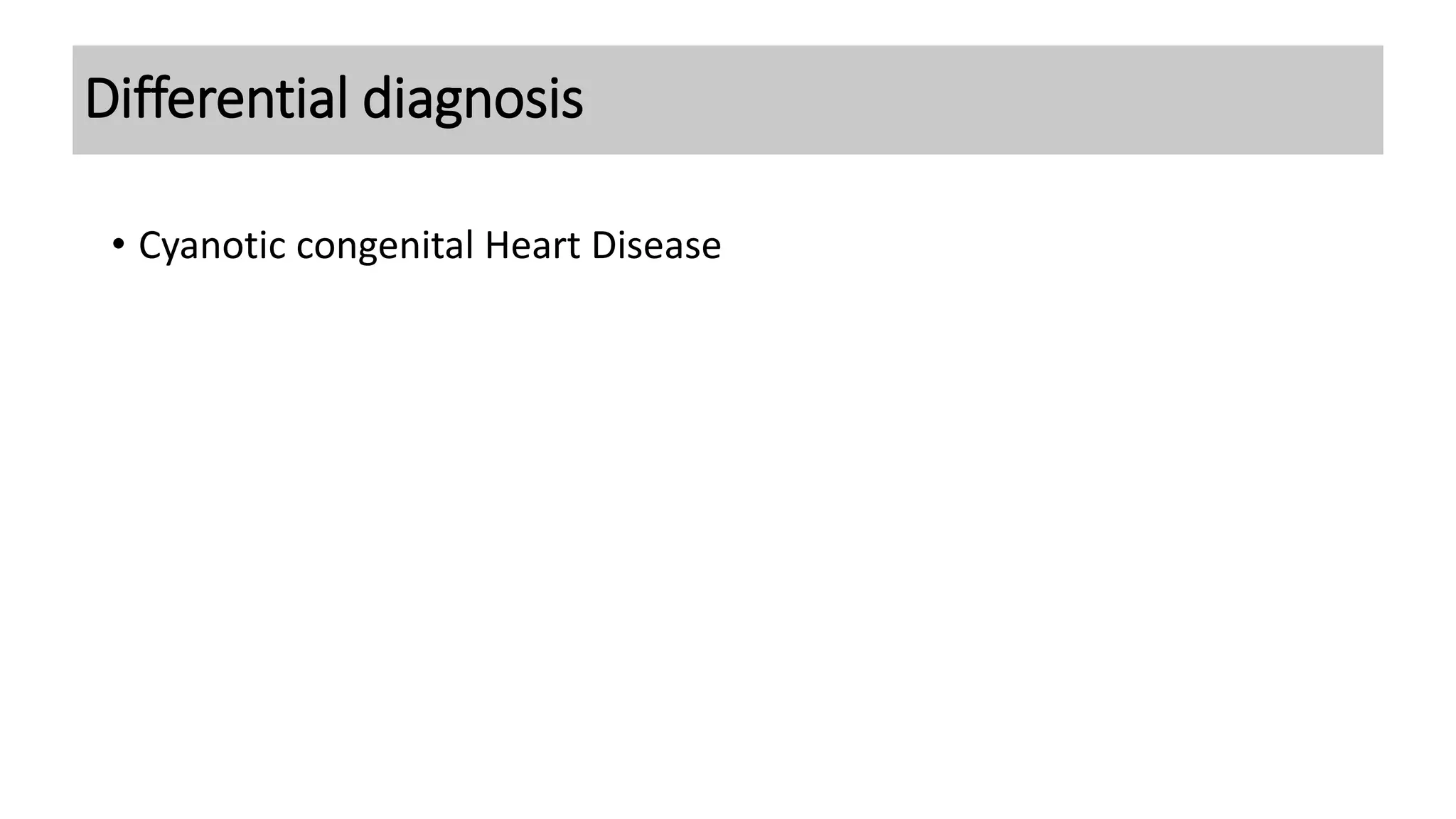


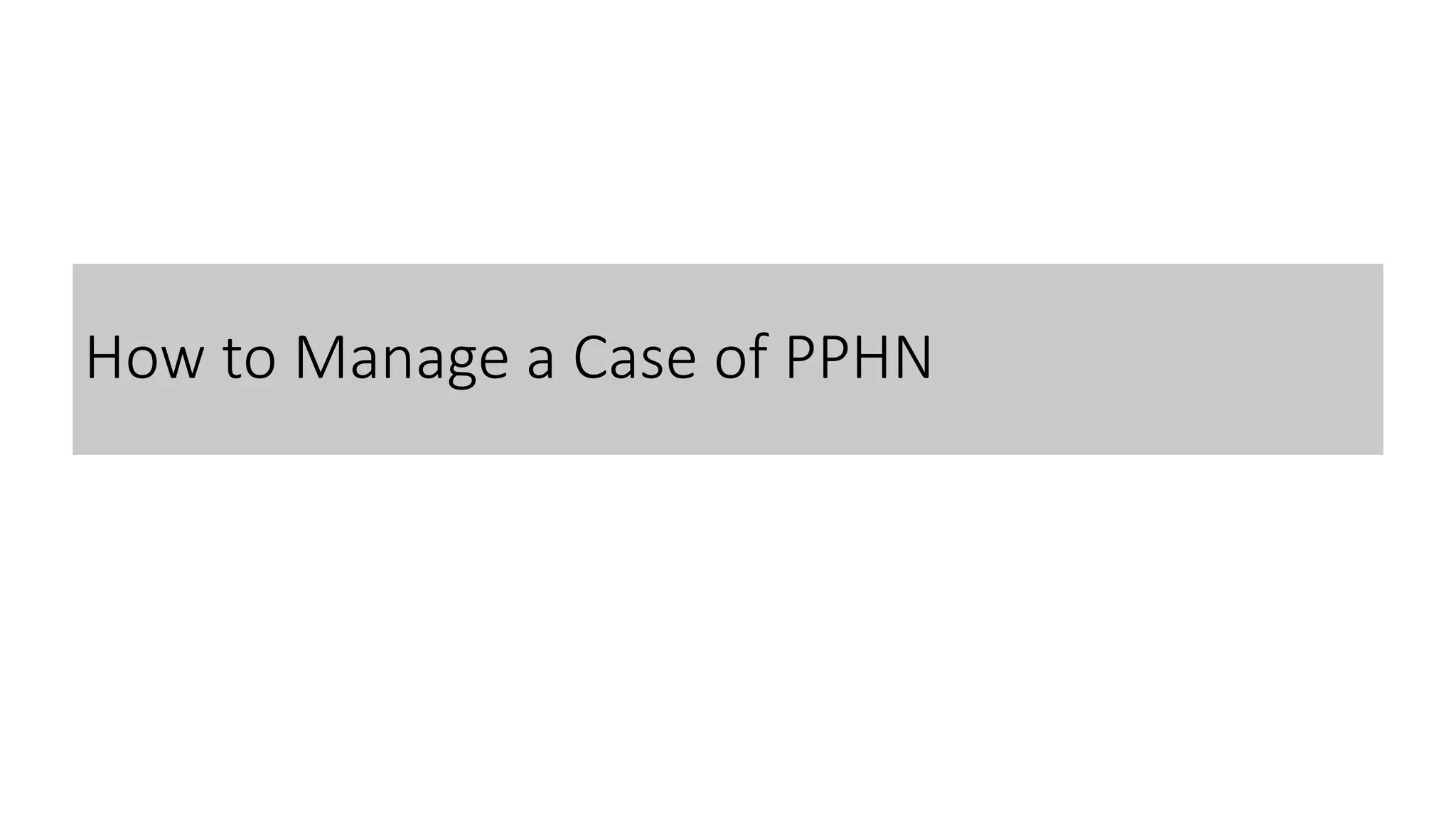

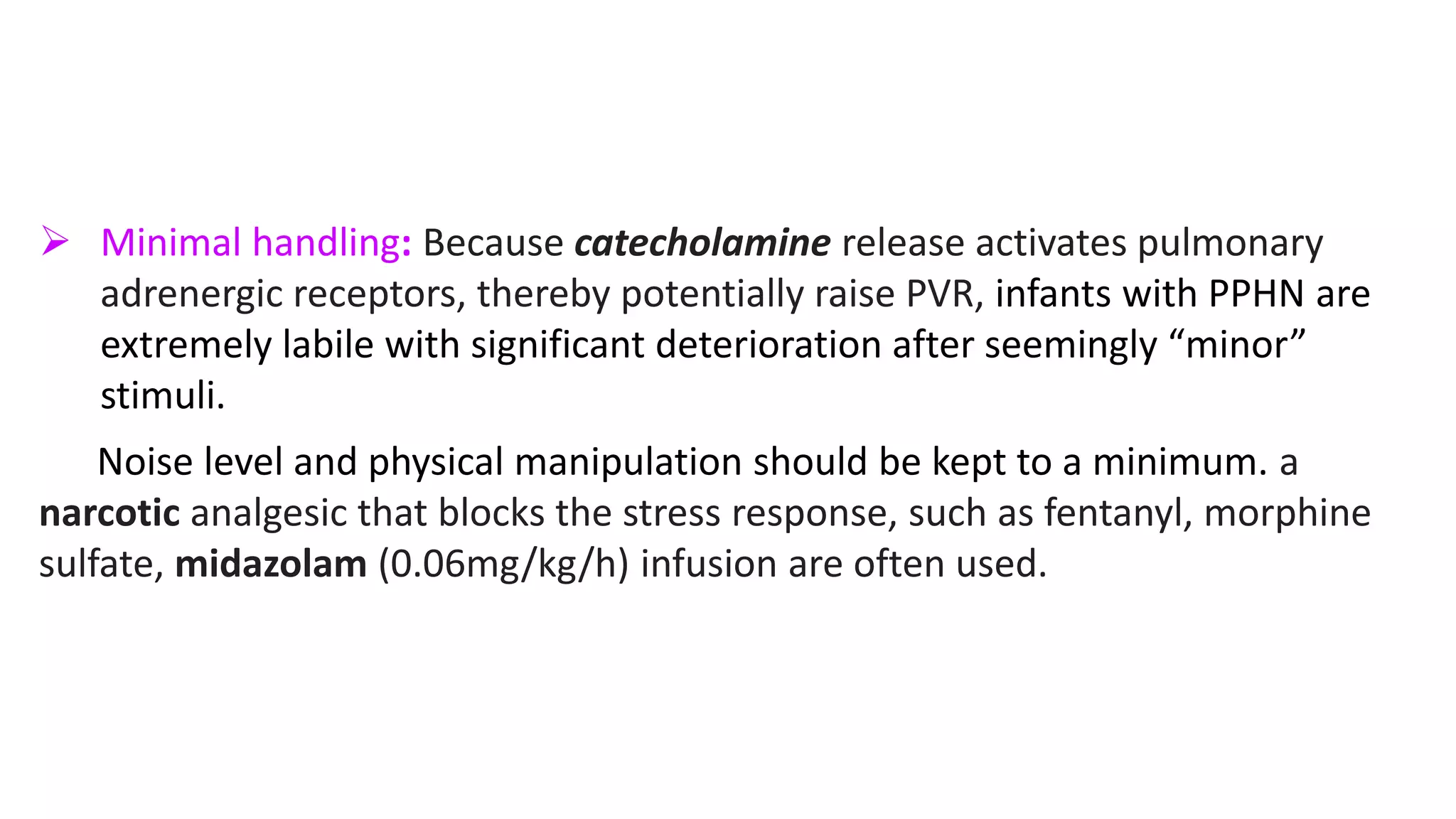






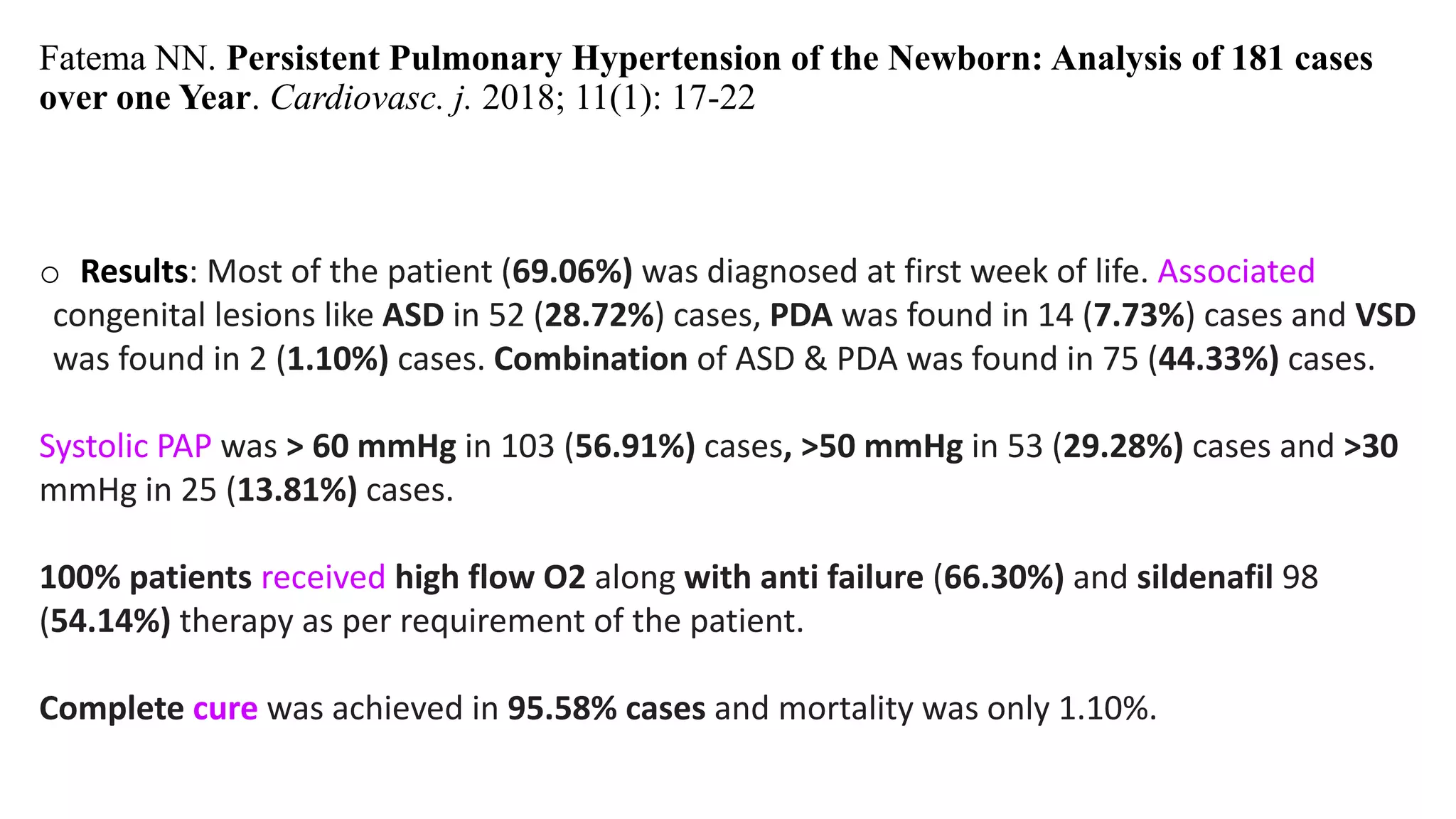
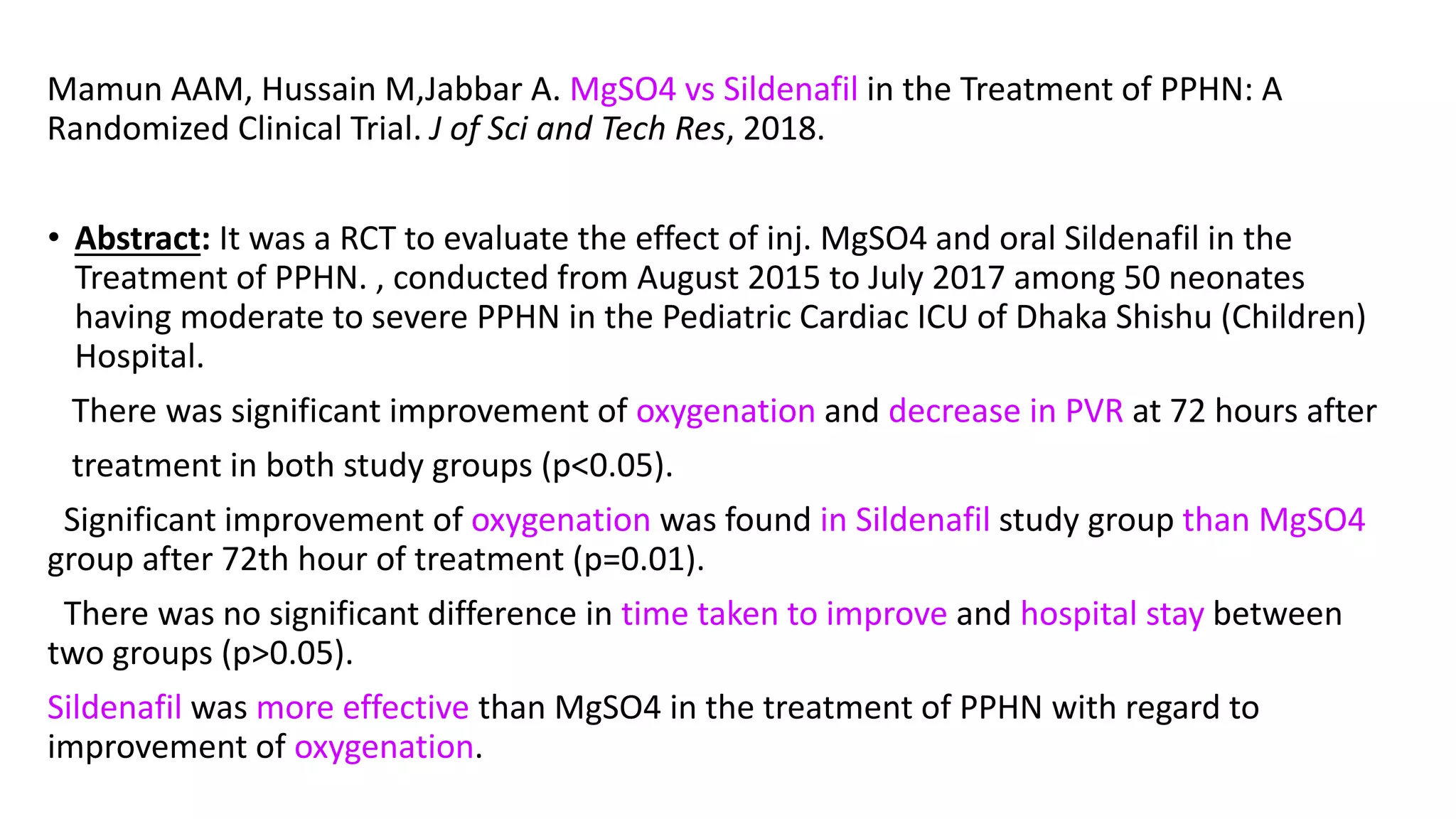
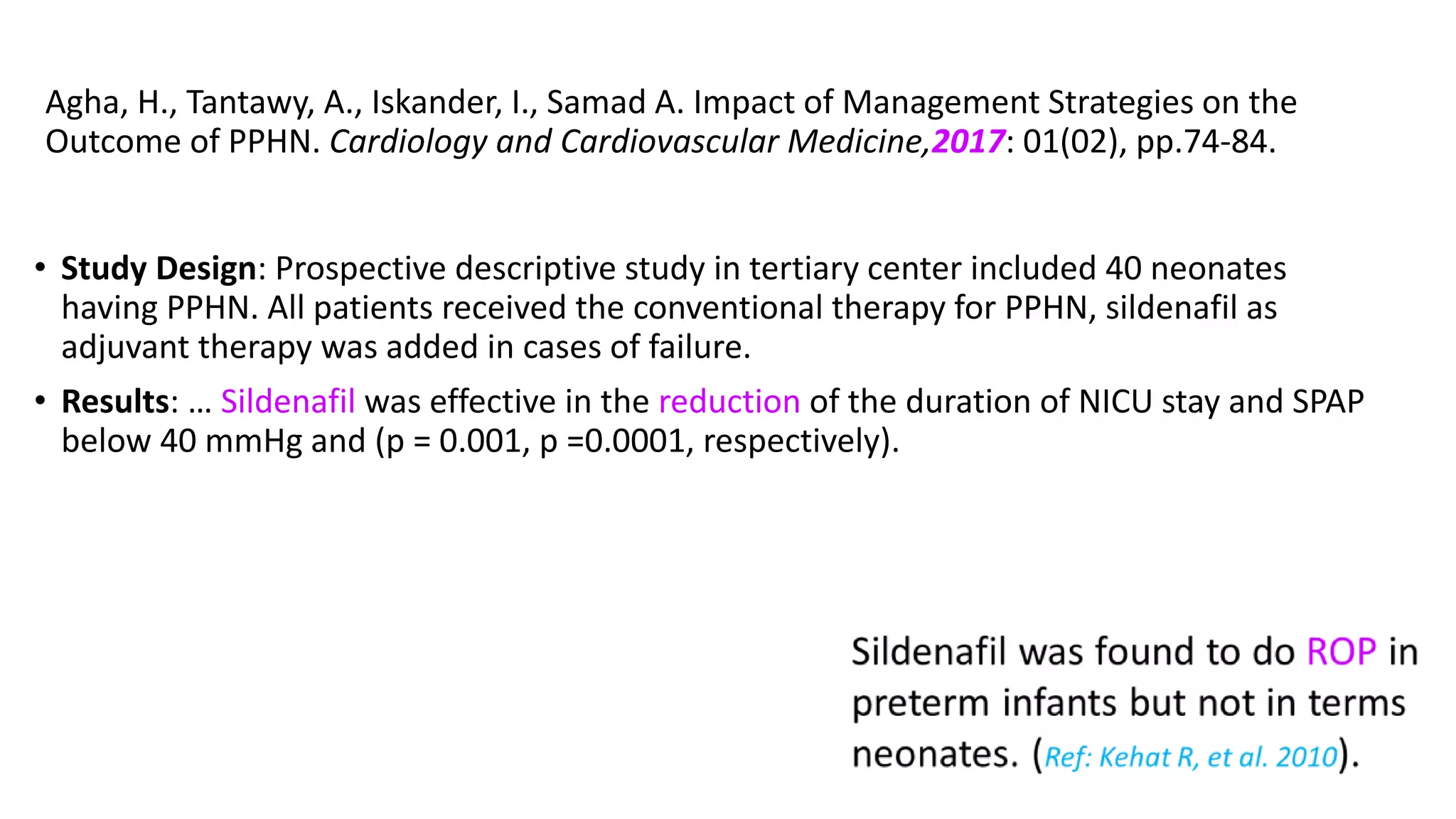

![Agha, H., Tantawy, A., Iskander, I., Samad A. Impact of Management Strategies on
the Outcome of PPHN. Cardiology and Cardiovascular Medicine,2017: 01(02),
pp.74-84.
Results: Male patients had significantly higher systolic pulmonary artery pressure
(SPAP) and higher mortality rate compared to females [7/23 (30.4%) versus 1/17
(5.9%), p = 0.04].
Infants of diabetic mothers had significantly higher mortality rate (p = 0.003).
The overall mortality rate was 8/40 neonates (20%), however, the mortality among
the patients who received sildenafil in addition to conventional therapy was 1/14
neonates (7.14%) of those group with p = 0.001).](https://image.slidesharecdn.com/0020seminarpphnamaan-210428182234/75/Seminar-on-PPHN-45-2048.jpg)
